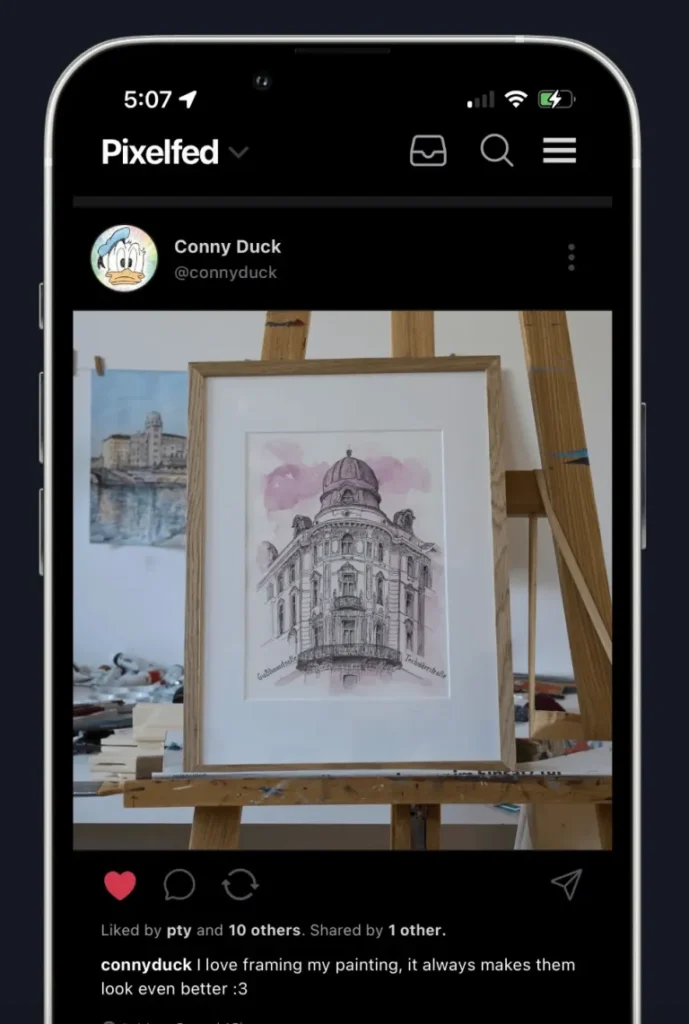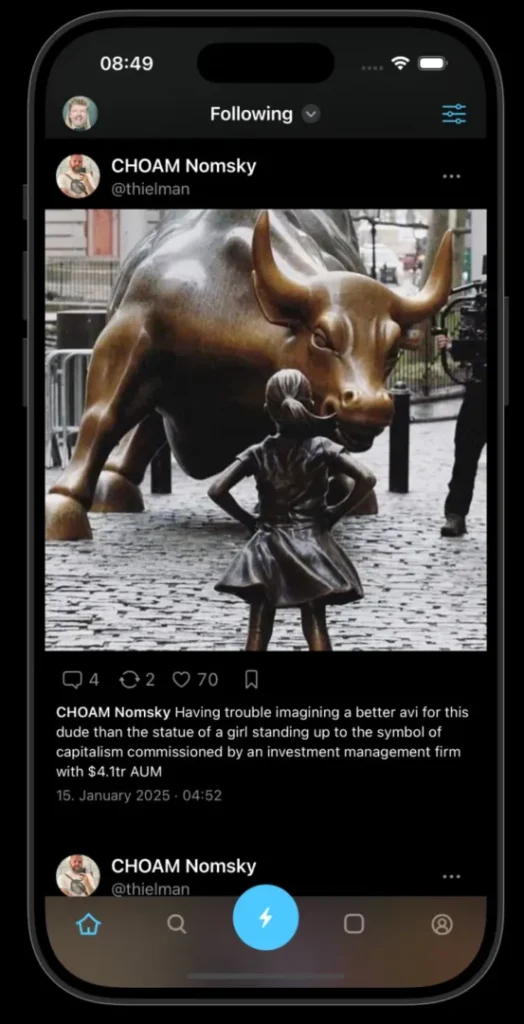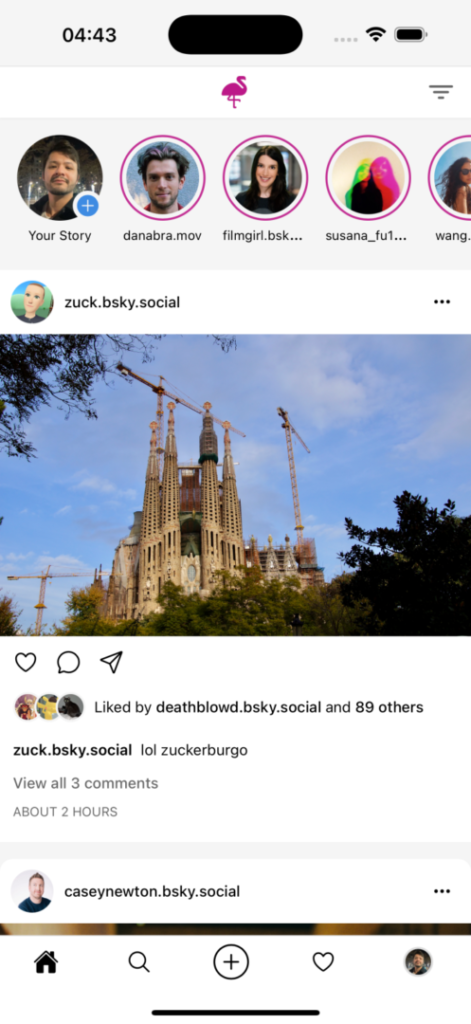The demand for alternatives to Big Tech’s social platforms is at an all-time high. With users increasingly seeking greater control over their digital presence, independent developers are pioneering new social media experiences outside the walled gardens of giants like Meta, TikTok, and X (formerly Twitter).
While platforms like Bluesky and Mastodon are already establishing themselves as viable alternatives to X, a new wave of innovation is now targeting Instagram—Meta’s massively popular photo-sharing app boasting over 2 billion monthly active users. Unlike their centralized counterpart, these emerging alternatives are being built on open protocols, making them decentralized, ad-free, and resistant to corporate control.
Though these Instagram challengers may not yet rival Meta in size, their ability to carve out dedicated communities speaks to a growing shift in user preference. The decentralized web, often referred to as the “fediverse,” is gaining traction among investors and Gen Z users alike—especially as younger audiences indicate they are more likely to explore new social experiences rather than return to traditional platforms like Instagram.
Here’s a closer look at the most promising Instagram alternatives built on open protocols like Bluesky’s AT Protocol and ActivityPub, which powers Mastodon and several other federated platforms.
Pixelfed: The Open-Source, Ad-Free Instagram Alternative

Pixelfed isn’t exactly new, but it made headlines in January when it launched official mobile apps for iOS and Android. Built on the ActivityPub protocol, Pixelfed integrates seamlessly into the fediverse alongside Mastodon (a decentralized Twitter alternative), PeerTube (a YouTube competitor), and even Meta’s own Threads and Flipboard.
Functionally, Pixelfed offers a familiar experience to Instagram users. It allows users to share and explore photos and videos, engage with posts, and send direct messages. However, Pixelfed differentiates itself with some key selling points:
- No Ads – Unlike Instagram, Pixelfed is completely ad-free, prioritizing user experience over monetization.
- Chronological Feeds – Posts appear in chronological order instead of being dictated by an opaque algorithm.
- Open Source & Decentralized – Users aren’t tied to a single corporation; anyone can host their own Pixelfed server and participate in the broader fediverse.
The platform’s popularity is growing steadily. Within just two days of its mobile app launch, Pixelfed surpassed 10,000 downloads, according to its developer, Daniel Supernault.
Flashes: A Bluesky-Powered Photo Network

Flashes is one of the latest Instagram alternatives, built on top of the Bluesky social network. The app, which recently entered beta testing, runs on the AT Protocol, ensuring interoperability with the broader Bluesky ecosystem.
Functionally, Flashes operates as a photo-first Bluesky client, allowing users to share images and short videos (up to one minute in length). Because it’s built on Bluesky’s protocol, posts on Flashes also appear on Bluesky, and interactions from Bluesky users are reflected on Flashes.
Flashes is part of a broader suite of Bluesky apps created by developer Sebastian Vogelsang, including:
- Skeets – A Twitter-like social platform.
- Bluescreen – A video-sharing application.
Vogelsang envisions a future where users can subscribe to a premium plan covering all three apps, enabling a seamless transition between them.
Pinksky: Bluesky’s Answer to Instagram Stories

Another Bluesky client, Pinksky, takes a different approach by focusing on user-friendly visual storytelling. Designed with former Instagram users in mind, Pinksky replicates many of the features familiar to Instagram fans, including a tappable Stories section at the top of the interface.
Unlike standalone social networks, Pinksky leverages existing Bluesky accounts, allowing users to engage with their current network, even if their friends haven’t yet joined Pinksky. While currently limited to Bluesky, the developers are exploring potential integrations with other open protocols, such as ActivityPub and Nostr, if demand grows.
For now, Pinksky is free to use, though premium features may be introduced in the future as the platform expands.
Skygram: A Community-Focused, Photo-Driven Bluesky Client

Skygram is still in early development, but its approach is unique. Instead of merely mirroring Instagram’s features, Skygram offers a more community-driven experience by allowing users to switch between interest-based feeds. For example, users can browse categories like Gardening, Dogs, and other specific topics at the top of the screen.
As an open-source project, Skygram’s code is available on GitHub, inviting contributions from developers who share the vision of a decentralized, user-first social media experience.
The Future of Decentralized Photo-Sharing Apps
As Big Tech platforms face growing scrutiny over their data privacy practices, algorithmic control, and ad-driven business models, decentralized alternatives like Pixelfed, Flashes, Pinksky, and Skygram are stepping in to offer fresh, user-centric experiences.
While these apps are still in their early stages, their emergence signals a broader shift in the social media landscape—one where users have more control, less corporate interference, and a greater emphasis on community-driven content.
If you’re looking for a photo-sharing experience that prioritizes freedom, privacy, and openness, these emerging platforms might be worth exploring. The future of social media could very well be decentralized.










